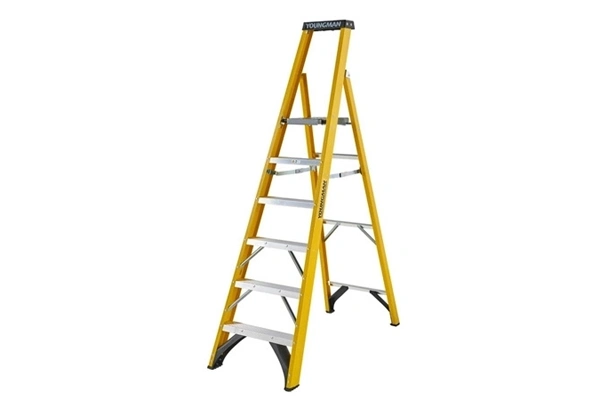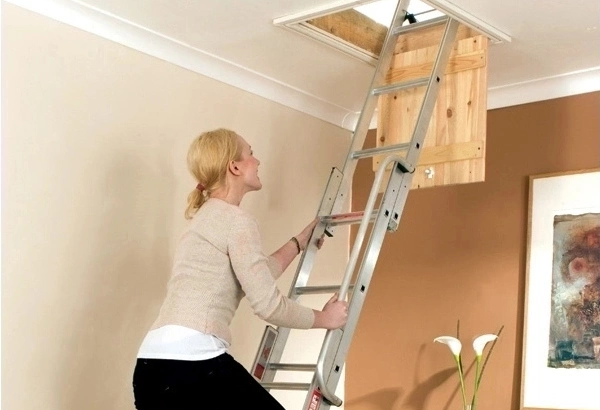Werner's products have earned their reputation by regularly providing professional users with dependable work at height solutions. When it comes to working in the most demanding conditions, the Werner track record is proved, as they are items that will not let you down.
As a result, our products are exceptionally durable, with our products regarded across the industry for their strength and long-term reliability. All our products have also been given the stamp of approval to certify that they have been tested to the required standards. Your Werner’s quality assurance.
Werner Ladders Best sellers
Werner ladders how to guides

How to choose the right ladder
Are you wanting to purchase a new ladder but aren’t sure where to begin? Read our guide to find out!

How to choose a loft ladder
Interested in purchasing a new loft ladder for your home? In this helpful guide, we’ll give you all the details on what to look for!
Werner Ladder testing
Ladder standards in the United Kingdom have settled on a single British and European standard that applies to all types of portable ladders. Where appropriate, our Werner ladders must fulfil the new EN131 standard, with a weight capability of 150kg. The European Commission was displeased with elements of the previous standard and issued an EC mandate for the standard to incorporate additional standards for stability, slide, durability, and strength, which will aid in reducing the primary causes of ladder-related accidents. To find out more about the new EN131 standards click below.
Frequently Asked Questions
Additional FAQ's
1. What should I do before I use my ladder?
It is recommended that you check your chosen ladder prior to use. Therefore, the following should be undertaken:
- Look for any damage or missing parts.
- Examine the ladder's feet for signs of severe wear.
- Look for any missing or loose bolts or rivets.
- Make sure the ropes aren't frayed and are firmly fastened.
- Make that the ladder stiles, rungs, and treads are all straight.
- Make that the spreaders are in good working order.
- Check for dust, dampness, oil, and corrosion on the ladder.
- Check for cracks, rot, and insect infestation on the timber ladder.
- Before using a ladder, clean it with mild soapy water and let it dry.
- If a ladder has any flaws, it should be taken out of use and replaced right away.
- Ladders should be kept dry and protected.
- A wooden ladder should never be painted. So that flaws aren't masked, apply a transparent varnish suited for outdoor or maritime conditions.
- If it is exposed to too much heat, a ladder may get weakened
- If the ladder has been damaged by a blow or accident, inspect it thoroughly before using it again.
- Fibreglass ladders will disintegrate with time, exposing the fibres. Apply enough coats of polyurethane or clear acrylic lacquer to encapsulate the fibres after cleaning the ladder with a commercial solvent.
2. How do I select the correct ladder for the job I need to do?
- Step 1: Choose the height.
- Step 2: Choose the application If you're planning to use the ladders for business reasons, be sure they're EN131 Professional rated.
- Step 3: Choose ladder style It's critical to select the right ladder for the work you're performing.
Select the appropriate ladder height for your project. The maximum reach for various ladder heights, assuming a 1.7m tall individual with an additional 0.3m vertical reach. Typically, the maximum safe working height is 1.5 metres higher than the maximum permissible climb height.
If the ladders will be used at a private residence for non-commercial activities, you can utilise EN131 Non-Professional ladders. Please note that the load capacity refers to the entire weight of the person, tool/equipment, and materials carried by the user. In the United Kingdom, all varieties of portable ladders are now covered under a unified British and European standard. Where appropriate, our Werner ladders must fulfil the new EN131 regulations, with a load limit of 150kg.
Take the time to learn about the various styles offered. Single Sided, Double Sided, Platform Step Ladders, Dual Purpose, Extension Ladders, or Mobile Scaffold are examples of these. Remember that you should use a Fibreglass product if you are working with or around electricity.
